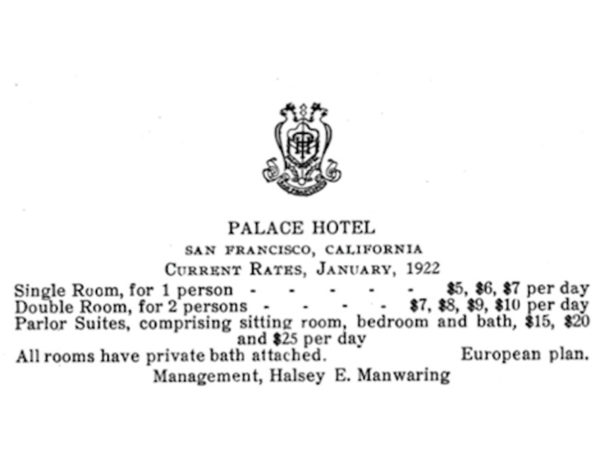
Growing pains (again) may best describe what the revenue management profession is going through today. The role of revenue management in the hospitality industry continues to evolve, but it does so in fits and starts. As we look into 2014 and beyond, there are several significant issues that organizations will need to address in order to retain a competitive advantage. I spoke with several leading industry practitioners to get their perspectives on some of the most pressing issues that are rapidly materializing.
1. The Talent Gap
The world was very different in the early 1990’s, when the revenue management discipline first began to emerge in earnest within the hospitality industry. In the vast majority of cases, revenue management was seen as a natural extension of the reservation sales function at the unit level. While a handful of brands employed individuals dedicated to the role, most practitioners had other responsibilities within their organizations. This was perfectly sensible at the time since the return on investment (ROI), was relatively unknown within the hospitality vertical, although had long since been proven within the airline industry.
Leadership within the hospitality revenue management profession naturally emerged from homegrown talent. The net result is that decision-making today relies quite heavily on past experience and inference. Compounding the challenge is the generally unfounded lack of trust of “black box” yield decision outputs created by most of today’s revenue management systems (RMS), decision overrides by senior leaders not immersed in the daily practice of revenue management and limited visibility into relevant data contained within many property management systems (PMS).
According to Sloan Dean, Vice President of Revenue Optimization with Ashford Hospitality Trust, “tomorrow’s revenue management professional will be much more analytical, will likely come from the financial services or investment banking industries and hold an undergraduate degree in economics. Just as ecommerce expertise has come from outside the industry”, Sloan predicts, “so too will analytical capabilities of revenue management be enhanced by external infusion”.
Several colleges and universities throughout the world have begun to teach courses on revenue management, but in the vast majority of cases these are simple introductory classes with the thrust of their educational emphasis remaining squarely placed on food and beverage, general hospitality management or finance.
This reveals the fact that the industry has begun to experience a talent gap that will likely continue widen in the near term. The talent pool in many markets will become either thin, very expensive or perhaps both. This will serve to open the door to individuals wanting to make revenue management their career of choice. It will also contribute to centralized revenue management decision support infrastructure within many organizations.
2. OTA’s Under Pressure from Metasearch
Distribution intermediation within the hospitality industry has existed in some form or fashion for decades; however, never has the industry been so “supported” by intermediaries as in the past two. Online travel agencies (OTA’s) began to emerge around 1996, and the timing couldn’t have been better. The industry, battered by the 1990 oil crisis was experiencing modest demand growth, accelerating supply growth and was eager to find new pockets of demand. The Internet represented just that. Tech-savvy travelers buying hotel rooms through a discreet channel – discreet in the fact that early adoption levels were low, was a very compelling prospect. Of course, reputation soon spread amongst other consumer groups that the best deals were to be had online.
We are now hurtling towards the next frontier of intermediation – metasearch. Several players have emerged within the past few years. Trivago, majority owned by Expedia, and Kayak owned by Priceline, are probably the most recognized entities in this space today, but there are a slew of others too such as HotelScan, TravelSupermarket, Room 77 and Hotels Combined to name just a few. Trip Advisor, once positioned as a site where travelers could rate their hotel stay experience along with comments, is now squarely in the metasearch arena with its new TripConnect product. Perhaps this is what explains why Priceline suddenly dropped Trip Advisor as a source for consumer reviews on the Kayak site.
Arguably, the phases of a leisure-oriented trip consist of inspiration, dreaming, planning, booking, anticipating, experiencing and re-living. The concept of “sharing”, via social media or otherwise, exists throughout this continuum. Metasearch entities, attracted by the significant margins that OTA’s have extracted from hotel suppliers, will effectively move the battle upstream to the planning phase and will monetize the delivery of highly qualified, highly motivated guests to the highest bidder; whether that be an OTA, supplier direct or some other entity. Either way, hoteliers will need to think very differently about their distribution strategies and marketing budget allocations. Kathleen Cullen, Vice President Revenue & Distribution for Commune Hotels & Resorts indicates that “hard dollars will be required in order to play effectively, but doing so is likely to pay dividends – particularly for independent properties who tend to rely more heavily on OTA’s than their typical brand counterparts”. “The real challenge”, Cullen states, “will be how to keep pace with OTA advertising spend on metasearch while protecting profit margins”.
Of course, OTA’s are run by smart people so they will organize themselves to adapt to this changing environment (Travelocity already has by refining their focus on being a consumer brand while leaving the business of technology to rival Expedia); however, continued pressure for OTA’s will come in the form of tougher margin negotiation with suppliers in a recovering economy, additional revenue splits with affiliates in an attempt to broaden reach, increased metasearch advertising spend and a diminished consumer value proposition resulting from the battle moving upstream.
3. New Entrants (Mega-Intermediaries)
No one really knows for certain what plans Google, Amazon and Apple have for the travel industry; however, the impact associated with participation by these potential players would be absolutely enormous.
Google’s knowledge graph with its semantic search capabilities combined with other Google products like carousel, now cards, maps, hotel finder and Google + all combine to serve consumers reasonably well through the dreaming, planning, booking and sharing phases of the travel continuum; however, it is quite likely that this is a build-up to something much more grand. Google’s $700M purchase of ITA for its airfare and schedule data stands out as one additional indicator that Google will strike hard when they are ready to do so. Industry suppliers better be ready to respond rapidly when they do.
Amazon’s foray into travel so far has come in the form of daily deal-style offers where suppliers benefit from a sudden boost of bookings but where their profits are eroded dramatically. Travel isn’t in a category by itself on Amazon.com but falls under “entertainment” within this mostly product-oriented site. If this potential powerhouse decided to rally it’s estimated 186-million user base, Amazon could quickly become a dominant player in the travel industry.
Apple too has the potential to dominate the travel space. Previous soft explorations with iTravel for example weren’t earth shattering, but combined with the ability to leverage Apple devices with near field technology (NFT) may allow Apple to lead the way, particularly within the experience phase of the continuum like no other player. Ticket creation and display, airline counter check-in, security screening, taxi payment, hotel room access could all be facilitated through a single device. It would be revolutionary for our times. Combined with an emergence in mobile for travel planning, Apple would be a force to recon with. Google Travel’s positioning rhetoric already contains reference to being device agnostic, which is an early indicator that they are highly aware of Apple’s potential. The prospect of Apple and Google joining forces in the travel space would be mind-boggling.
4. Group Dynamics
Groups generally have longer booking lead times than other segments, so it stands to reason that volumes lag other segments as demand cycles ebb and flow. In this latest economic recovery, it appears as though recovery in the group segment is unusually protracted. According to Smith Travel Research, leisure bookings are about 20% ahead of the pre-recession peak in March 2008, while group bookings are 3% down from their prior peak, which occurred in March 2007. Group contribution declines are being felt in particular at large convention hotels in major cities across the United States, which is having a trickle down effect at other properties, particularly in their lack of ability to grow rate.
According to Paul Wood, Vice President of Revenue Generation for Greenwood Hospitality Group, “we are finding that many group attendees are booking around city-wide convention blocks, so it is making tracking relatively difficult and possibly skewing the results”. “Regardless, we are seeing a lag when it comes to our own internal group booking pace and contemporaries I have spoken with are experiencing the same thing”.
This highlights the need for hoteliers to place additional focus on their own direct sales efforts to realize an appropriate contribution level from the group segment. Capturing share will require an investment in human resource capital, training and marketing. It will also require an increased level of communication between those in the revenue management, catering and sales roles as meeting space release thresholds are adjusted to optimize revenue potential based on anticipated demand.
In other cases, reservation sales, individual business travel sales and leisure marketing will need to make up for the shortfall. While the specific activities will be different depending on the need, those in a revenue management capacity will need to allocate their time and attention appropriately.
5. Pricing Support Technologies
Contrary to the beliefs of some, ADR performance is not a function of pricing, but rather is a function of business mix. Pricing structures and price positioning relative the competitive landscape contribute directly to mix of sales.
Pricing transparency in our industry has actually made the revenue manager’s job more challenging vs. easier. While access to data is easier than ever, interpreting that data and making appropriate pricing moves to optimize revenue potential for a given asset is more difficult. Fencing customer segments by placing conditions around access to given rate plans, determining price “steps” between unit types, forecasting variable demand cycles over time, watching competitive actions and responses to pricing moves, influencing marketing activities and throttling channel production are all key activities that must be considered in concert with one another.
Technology will continue to emerge which will assist revenue management professionals make these decisions. Jane Stampe, Managing Director at IDeaS Revenue Solutions shared that “advancements in analytics will continue to accelerate and these advancements will profoundly impact how, and with what frequency revenue decisions will be made in the future”. “Those that are open to both adopt and embrace these capabilities will benefit from getting a jump start on the competition”, Stampe concluded.
6. Content is King (more than ever)
It is well understood that 3rd party website content helps drive interest and bookings, but it is just as important for revenue managers to keep up with booking and web technologies trends in order to help drive direct bookings.
Recent changes to Google’s search algorithm has again brought to the forefront that compelling content not only remains “King” but requires in-depth review of website content, structure and technologies. According to Jack Meredith, Director of Marketing Analytics at Vacation Rentals, LLC (Gold Key | PHR Hotels & Resorts), “Recent paradigm shift in search marketing by Google that involves extracting website marketing content and then scoring this to rank page content relevance for search results display purposes has shaken the existing keyword driven search engine strategies”. He continues; “This represents one of the most significant changes by Google since 2001”.
Industry pundits are recommending that websites have more focused pages and better content relating to key marketing words and phrases in order to achieve higher relevance scores for Google search. At this time, Yahoo and Bing search engines have not adopted this approach, but only time will tell if they go down this road.
Along with content, new and existing technologies are continuing to evolve to help improve revenue creation opportunities. Technologies including automatically updated last minute deals, special offers when guests abandon the booking process and real-time best rate merchandising are now part of the game and are now well beyond the “nice to have” stage. These technologies need to be integrated with web content and can be used to shift market share back to direct bookings. These targeted merchandizing technologies help shift mix of sales to generate higher RevPAR through both enhanced occupancy and higher ADR. According to Meredith, “In 2013, over 30% of our year over increase in online revenue came from implementation of these content rich merchandizing capabilities”.
7. Best Rate Guarantees and Price Parity
The concept of best rate guarantees was introduced in the late 1990’s in an attempt to tame the “wild west” of distribution by providing assurances that potential guests would find rates that were just as attractive on brand.com as they could find on OTA sites. Rate parity was introduced in OTA contracts as most favored nation clauses designed to ensure that margins, inventory access and terms offered by suppliers were at least as favorable as those being offered to other competing OTA’s.
We predict that supplier best rate guarantees will likely remain solidly intact, but that rate parity between distributors will begin to crumble. Share performance requirements, marketing support commitments, qualified customer segment access and flexible margin agreements will signal the new order and will more closely align the goals of both supplier and distributor. Those brands that can ensure compliance amongst their hotel constituents will be among the first to benefit from this change. Independent properties too will benefit and will likely retain their speed-to-adoption advantage over their branded peers, but an enhanced level of sophistication in revenue management will be required to effectively leverage these emerging opportunities.
8. The Discipline Convergence Dilemma
The lines between various revenue generation disciplines within the hospitality industry, by necessity are converging as evidenced by job titles for practitioners that have evolved from director of revenue management, to director of revenue optimization, director of revenue strategy or something similar. The trouble is, every discipline (pricing, distribution, eCommerce, marketing etc.) is becoming more and more complex – each requiring a specialized knowledge.
The solution may be that discipline specialists support a functional leader who is ultimately accountable for top line performance, such as a chief revenue officer. This is viable for big organizations and large properties, but smaller properties, the ones who are often the most competitively vulnerable, will need to employ talent that has multi-disciplinary expertise. Attracting and retaining such talent will likely be problematic.
Regardless, revenue management practitioners will need to insert themselves appropriately into the activities of related disciplines. Examples include tracking the ROI associated with PPC advertising, working with eCommerce developers on improving booking engine conversion, monitoring reservation sales agent performance and collaborating with the social media manager or public relations resource to craft specific messaging designed to support identified areas of need.
9. Total RM
Revenue management principles can apply to areas of an operation beyond the rooms department. Golf, spa, catering, activities, food and beverage outlets and retail shops are ripe for optimization in most cases. The trouble is that barriers still exist to fully realizing the benefits of revenue management techniques in other departments.
“Property technology is not fully integrated to the degree it needs to be in order for total revenue management to fully take hold”, says Bonnie Buckhiester, Principle of Buckhiester Management, “and there is inherent resistance by some functional managers to be governed by revenue management”.
“P&L statements aggregate departmental profits”, continues Buckhiester, “whereas total revenue management requires disaggregation of profits to fully understand the impacts that shifts in business mix can have on expenses and revenue streams – and we’re just not quite there yet, but will be soon”.
10. The Widening Sophistication Spectrum
Execution at the property is key, so even with the most advanced analytics, schemes and processes contemplated at the senior level, translating this to action in the form of predictable associate behavior is critical for sustained success. Essentially, it will require a delicate balance between creatively developing solutions to complex problems and fashioning these solutions in a way that can be implemented throughout the organization.
Tools, systems, processes and technologies will continue to evolve and revenue management practitioners within organizations that are supported both financially and culturally will advance. Organizations that don’t focus on advancing their revenue management expertise will fall further and further behind. Reconciling these extremes, particularly within a multi-brand environment, will emerge as a significant challenge in the years to come.
Final Thoughts:
The fact that the above issues are emerging illustrates the point that hospitality revenue management is becoming both more intricate and multifaceted. New opportunities and challenges will present themselves in an environment that is growing more complex over time. How organizations navigate through these challenges will make the difference between enhanced success, mediocre performance or complete failure. One thing is for certain, they can’t be ignored.
This article was first published on Hotelexecutive.com



